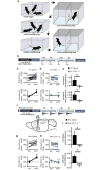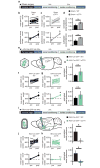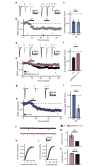Social reward requires coordinated activity of nucleus accumbens oxytocin and serotonin
- PMID: 24025838
- PMCID: PMC4091761
- DOI: 10.1038/nature12518
Social reward requires coordinated activity of nucleus accumbens oxytocin and serotonin
Abstract
Social behaviours in species as diverse as honey bees and humans promote group survival but often come at some cost to the individual. Although reinforcement of adaptive social interactions is ostensibly required for the evolutionary persistence of these behaviours, the neural mechanisms by which social reward is encoded by the brain are largely unknown. Here we demonstrate that in mice oxytocin acts as a social reinforcement signal within the nucleus accumbens core, where it elicits a presynaptically expressed long-term depression of excitatory synaptic transmission in medium spiny neurons. Although the nucleus accumbens receives oxytocin-receptor-containing inputs from several brain regions, genetic deletion of these receptors specifically from dorsal raphe nucleus, which provides serotonergic (5-hydroxytryptamine; 5-HT) innervation to the nucleus accumbens, abolishes the reinforcing properties of social interaction. Furthermore, oxytocin-induced synaptic plasticity requires activation of nucleus accumbens 5-HT1B receptors, the blockade of which prevents social reward. These results demonstrate that the rewarding properties of social interaction in mice require the coordinated activity of oxytocin and 5-HT in the nucleus accumbens, a mechanistic insight with implications for understanding the pathogenesis of social dysfunction in neuropsychiatric disorders such as autism.
Figures






Comment in
-
Cognitive neuroscience: oxytocin and serotonin make it worthwhile.Nat Rev Neurosci. 2013 Nov;14(11):740-1. doi: 10.1038/nrn3610. Epub 2013 Sep 25. Nat Rev Neurosci. 2013. PMID: 24064591 No abstract available.
References
-
- Insel TR. Is social attachment an addictive disorder? Physiol Behav. 2003;79:351–357. - PubMed
-
- Shultz S, Opie C, Atkinson QD. Stepwise evolution of stable sociality in primates. Nature. 2011;479:219–222. - PubMed
-
- Young LJ, Wang Z. The neurobiology of pair bonding. Nature Neurosci. 2004;7:1048–1054. - PubMed
Publication types
MeSH terms
Substances
Grants and funding
LinkOut - more resources
Full Text Sources
Other Literature Sources
Molecular Biology Databases

